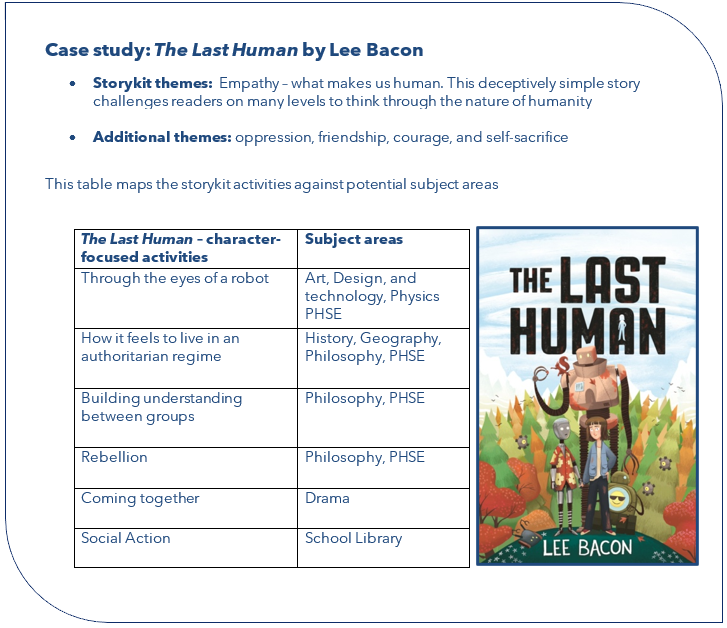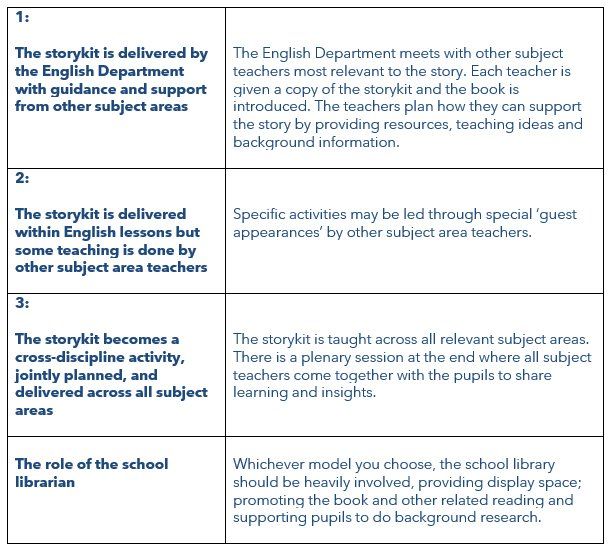PHASE 3 - IMPLEMENTING TEACHING TOOLS AND RESOURCESEmpathy Storykits
For more information about using Empathy Storykits, read the powerpoint
Empathy Storykits support deeper exploration of empathy-boosting stories. They have a specific focus on character to build emotional insight and encourage pupils to use their imagination to understand different perspectives. They give children time to reflect on the story and deepen their understanding of the characters. The storykits contain ideas for creative and immersive activities, giving pupils the opportunity to reflect and experience elements of the story using all their senses. The activities encourage children to practice the four main empathy skills we aim to foster.
Below you will find a step by step guide, case study and model for how the storykits can be delivered.
Storykits: A step by step guide
Step 1: Choose your storykit-based on book or theme
- Each storykit one has a theme, and a recommended age range
- There are storykits appropriate for KS1 through to KS3
- Many have ideas for additional reading so consider sourcing some of the other books listed
- Many of the stories deal with sensitive issues, so it is important that you read the whole book yourself
Step 2: Plan your timescale
- Using a storykit about a picture book might take two or three weeks to complete, but a longer story may take half a term or longer
Step 3: Planning
- Decide which of the suggested storykit activities to introduce. You might do all of them, or just choose a few that link well with other texts
- Check you have any resources required
Step 4: Prepare the activities
- Explore the Storykit’s orientation ideas and plan how you will support pupils to research the topic, so that you build in a social action focus from the start
Step 5: Using the Storykits with the pupils
- Introduce the topic. You might start with the orientation activities or encourage the pupils to carry out the research as
- the story progresses
- Read the chosen title aloud to the class/group in suitable sections (or give pupils time to read independently)
- Use Empathy Book-talking guidance when discussing the book
- Introduce the activities you have selected at the appropriate points in the story
- Involve pupils in creating other activities linked to the storykit and deciding on social action
Step 6: Empathy in action
- As you are coming to the end, start discussing what pupils want to do to as a result of their experiences to make a difference in this classroom, in their year group and in the whole school community
- Include any ideas initiated by them during the course of the story and together draw up an action plan
- Take the action
Models for how storykits can be delivered
“Unless we read contemporary literature to give us the context of teenagers today, we will struggle to empathise with their experiences. Being a teenager in 2020 is very different to my experience .”
Head of English at Pentrehafod School


